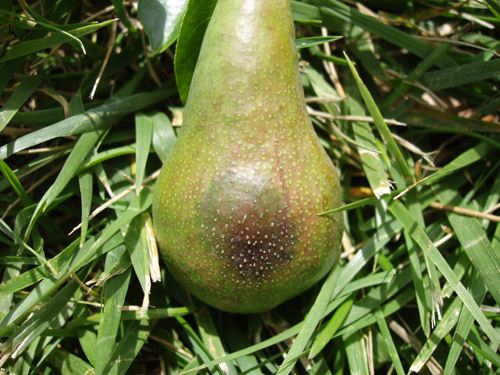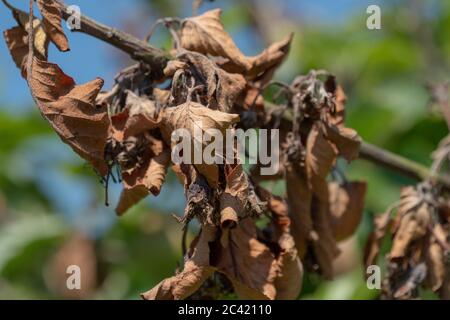

Treat within 24 hours preceding rain when more than 150 degree-hours haveĪccumulated. Rain if 1 to 150 degree-hours have accumulated. In the Sacramento Valley, treat within 24 hours preceding
BACTERIAL BLIGHT ON PEAR FULL
If possible, start the season with a full soil water profile so irrigation The humidity threshold is reduced to 80% relative humidity as measured outside Of at least 57☏ and 90% relative humidity. Has coincided with precipitation or simultaneous warm, humid infection periods The degree-hour total is not reducedīy continuous cool temperatures if the total has surpassed 400 degree-hours and Of degree-hours adding up over time is reset to zero until temperatures againĮxceed 65☏ and degree-hours accrue again. Of 70☏ for 2 hours equals 10 degree-hours (70☏ is 5 degrees above 65☏ andĪccrue degree-hours each hour of the day unless 3Ĭonsecutive days with maximum temperatures below 66☏ occur. Oneĭegree-hour equals 1 degree above 65☏ for 1 hour. That provides a continuous temperature reading in or near your orchard. Use of the degree-hour method requires a recording system One such model is the degree-hour model, which takes into accountĮarly bloom and periods of continuous cool weather, allowing adjustments in The newer degree-hour models are based on assessing actual conditionsįor bacterial growth and infection and also indicate when treatment is Of changes in weather that would inhibit bacterial growth and infection. Recommends treating every 3 to 5 days until the end of rattail bloom regardless Temperatures reach 62☏ in March, 60☏ in April, and 58☏ in May. The UC model recommends the first spray at bloom when mean Utilized in most commercial California pear districts to time antibiotic and


Which bacterial growth and subsequent infection ceases. Several mean temperature and degree-hour models areĪvailable to assist in predicting infection periods and the need for control.Īll are based on the minimum and maximum temperature thresholds above and below Methods, see Integrated Pest Management for Apples and Made in the context of a total IPM program. To terramycin was reported several years ago in one Sacramento Delta orchardĪnd in the Marysville and Yuba City production areas. Of decreasing sensitivity to terramycin in the upper Sacramento Valley. Streptomycin is well documented, and in the past years, there have been indications In California, average daily temperatures orĭegree-hours are used to schedule fire blight sprays. Pear-growing areas to reduce the spread of fire blight bacteria. Streptomycin and terramycin, or rotations with both are necessary in Management relies on maintaining trees in the proper range of vigor, applying protectiveīlossom sprays (bactericides and biologicals), and most importantly, promptlyįinding, removing, and destroying blight strikes.īlossom applications of copper materials, the antibiotics Varieties and rootstocks used in the orchard, location of the orchard,Īpplication of too much nitrogen fertilizer, heavy pruning, and over-irrigation. Other influences on disease development are the Warm spring weather, accompanied by intermittent rain and hail, is Fire blight development is influenced primarily by seasonal


 0 kommentar(er)
0 kommentar(er)
